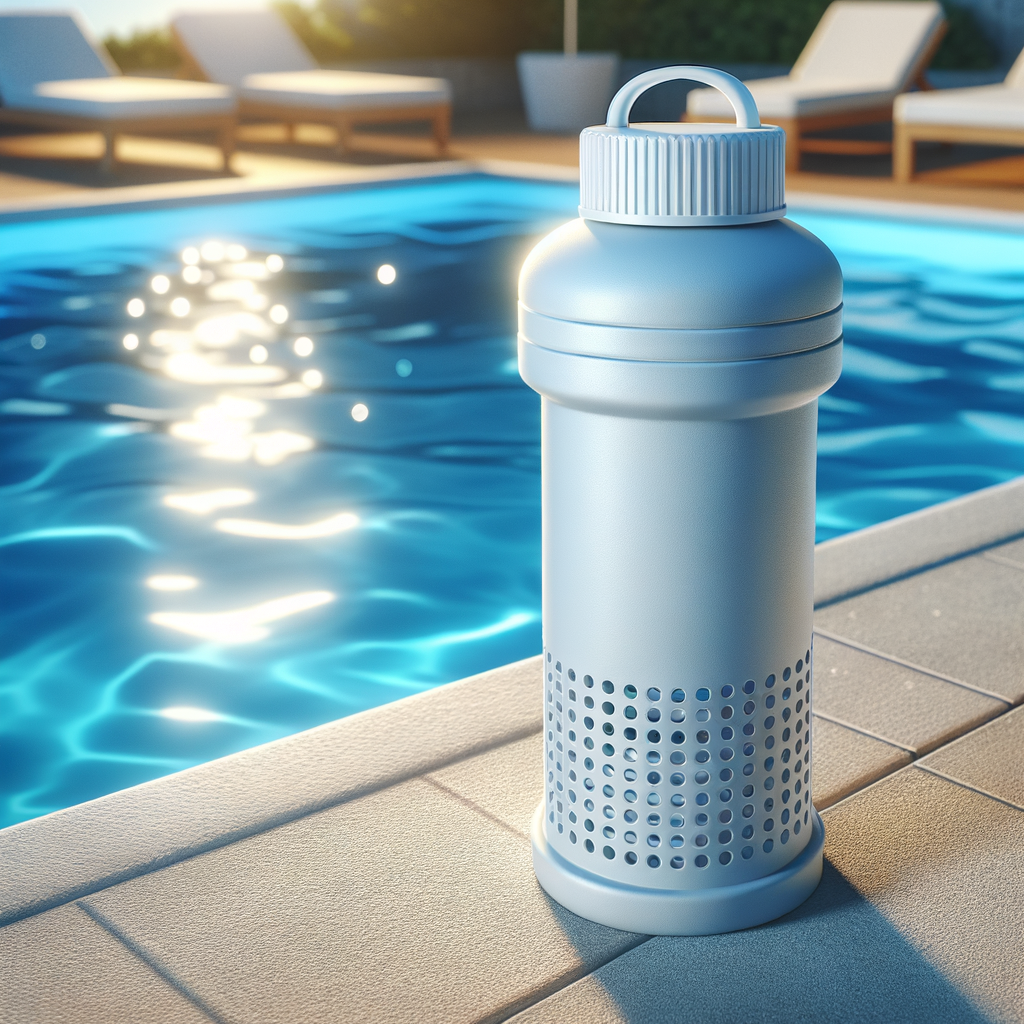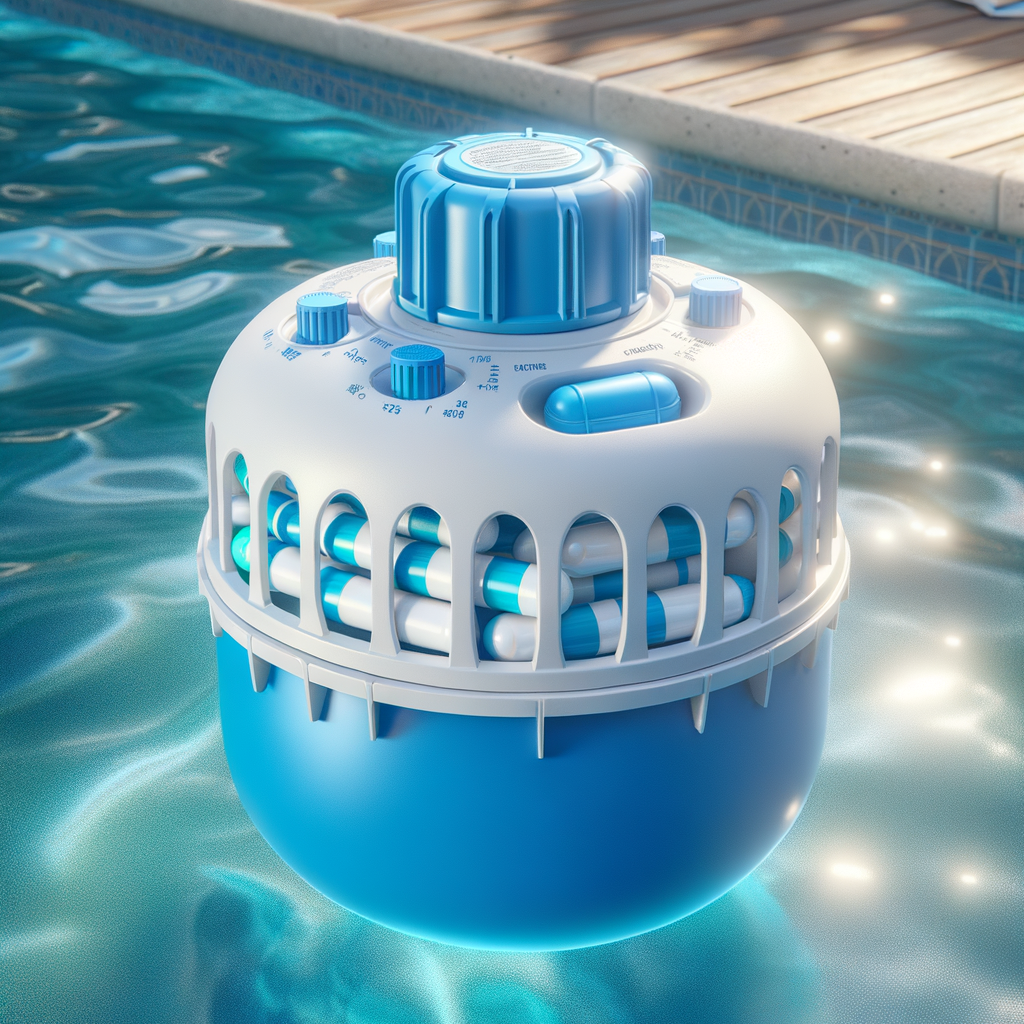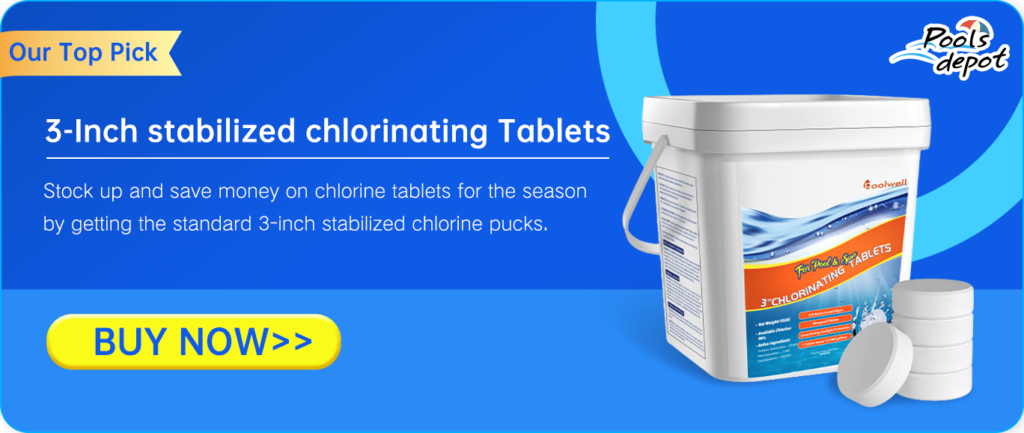
“Effortless Pool Perfection: Dive into Crystal Clear Waters!”
Table of Contents
Introduction
A pool chlorine dispenser is a device designed to simplify the process of maintaining proper chlorine levels in swimming pools. It ensures consistent and even distribution of chlorine, which is essential for keeping pool water clean, clear, and safe for swimmers. These dispensers come in various forms, including floating models and in-line systems, and are typically adjustable to control the rate at which chlorine is released. By automating the chlorination process, pool chlorine dispensers help prevent the growth of algae and bacteria, reduce the need for manual chemical adjustments, and contribute to a more enjoyable and hassle-free swimming experience.
Comparing Different Types Of Pool Chlorine Dispensers

When it comes to maintaining a clean and safe swimming environment, the role of a pool chlorine dispenser cannot be overstated. These devices are essential for ensuring that the chlorine levels in the pool remain consistent, thereby preventing the growth of harmful bacteria and algae. There are several types of pool chlorine dispensers available on the market, each with its own set of advantages and disadvantages. Understanding these differences can help pool owners make an informed decision that best suits their needs.
One of the most common types of pool chlorine dispensers is the floating chlorine dispenser. This type of dispenser is designed to float on the surface of the pool, slowly releasing chlorine tablets into the water. Floating dispensers are generally easy to use and relatively inexpensive, making them a popular choice among pool owners. However, they do have some drawbacks. For instance, they can be less effective in larger pools, as the chlorine may not be evenly distributed. Additionally, floating dispensers can sometimes get caught in pool skimmers or other equipment, which can impede their functionality.
In contrast, in-line chlorine dispensers are installed directly into the pool’s plumbing system. These dispensers automatically release chlorine into the water as it circulates through the pool’s filtration system. One of the main advantages of in-line dispensers is that they provide a more consistent and even distribution of chlorine throughout the pool. This can be particularly beneficial for larger pools or those with complex shapes. However, in-line dispensers are generally more expensive and require professional installation, which can be a deterrent for some pool owners.
Another option to consider is the off-line chlorine dispenser. Similar to in-line dispensers, off-line dispensers are connected to the pool’s plumbing system. However, they are installed outside of the main circulation line, which can make them easier to install and maintain. Off-line dispensers offer many of the same benefits as in-line dispensers, including consistent chlorine distribution and reduced manual effort. Nevertheless, they still require a certain level of technical expertise for installation and may not be suitable for all pool setups.
Saltwater chlorine generators represent a more advanced type of chlorine dispenser. These systems use electrolysis to convert salt into chlorine, which is then automatically dispersed into the pool water. Saltwater generators offer several advantages, including lower maintenance requirements and a more natural swimming experience, as the water tends to be less harsh on the skin and eyes. However, the initial cost of a saltwater generator can be quite high, and the system requires regular monitoring to ensure that the salt levels remain within the appropriate range.
In addition to these primary types of chlorine dispensers, there are also hybrid systems that combine elements of different dispenser types. For example, some systems may use both a floating dispenser and an in-line dispenser to achieve optimal chlorine distribution. These hybrid systems can offer a high level of flexibility and customization, allowing pool owners to tailor their chlorine dispensing strategy to their specific needs.
In conclusion, the choice of a pool chlorine dispenser depends on various factors, including the size and shape of the pool, the pool owner’s budget, and their willingness to perform regular maintenance. Floating dispensers offer simplicity and affordability, while in-line and off-line dispensers provide more consistent chlorine distribution. Saltwater generators, on the other hand, offer a more advanced and low-maintenance solution but come with a higher initial cost. By carefully considering these options, pool owners can select the most appropriate chlorine dispenser to maintain a clean and safe swimming environment.
Maintenance Tips For Your Pool Chlorine Dispenser
Maintaining a pool chlorine dispenser is essential for ensuring the longevity of your pool’s cleanliness and the health of its users. A well-maintained dispenser not only helps in keeping the water clear and free from harmful bacteria but also ensures that the chemical levels remain balanced, providing a safe swimming environment. To achieve this, it is crucial to follow a series of maintenance tips that will keep your pool chlorine dispenser in optimal condition.
First and foremost, regular inspection of the chlorine dispenser is necessary. This involves checking for any visible signs of wear and tear, such as cracks or leaks, which could compromise its functionality. If any damage is detected, it is advisable to replace the dispenser immediately to prevent any potential hazards. Additionally, it is important to ensure that the dispenser is securely attached to the pool system to avoid any accidental dislodgement.
Another critical aspect of maintaining your pool chlorine dispenser is cleaning it periodically. Over time, chlorine residue and other debris can accumulate inside the dispenser, which can obstruct the flow of chlorine into the pool. To clean the dispenser, it is recommended to use a mild detergent and a soft brush to scrub the interior and exterior surfaces. Rinsing thoroughly with water afterward will help remove any remaining detergent, ensuring that no harmful chemicals are introduced into the pool.
Furthermore, it is essential to monitor the chlorine levels in your pool regularly. This can be done using a pool test kit, which will provide accurate readings of the chlorine concentration. By doing so, you can adjust the settings on your chlorine dispenser accordingly to maintain the ideal chlorine levels. It is important to note that the recommended chlorine levels for a swimming pool typically range between 1 and 3 parts per million (ppm). Keeping the chlorine levels within this range will help prevent the growth of algae and bacteria, ensuring a safe and clean swimming environment.
In addition to regular cleaning and monitoring, it is also important to store chlorine tablets or granules properly. Chlorine should be kept in a cool, dry place, away from direct sunlight and moisture, as exposure to these elements can cause the chlorine to degrade and lose its effectiveness. Using a tightly sealed container will help preserve the potency of the chlorine, ensuring that it remains effective when added to the dispenser.
Moreover, it is advisable to follow the manufacturer’s guidelines for the maintenance and operation of your pool chlorine dispenser. These guidelines often provide specific instructions on how to care for the dispenser, including recommended cleaning intervals and troubleshooting tips for common issues. Adhering to these guidelines will help prolong the life of your dispenser and ensure that it functions efficiently.
Lastly, it is important to be mindful of the environmental impact of using chlorine in your pool. While chlorine is effective in keeping the water clean, it can also be harmful to the environment if not used responsibly. To minimize the environmental impact, consider using alternative pool sanitizers, such as saltwater systems or ozone generators, which can reduce the reliance on chlorine while still maintaining a clean and safe pool.
In conclusion, maintaining your pool chlorine dispenser involves regular inspection, cleaning, monitoring of chlorine levels, proper storage of chlorine products, and adherence to manufacturer guidelines. By following these maintenance tips, you can ensure that your pool remains a safe and enjoyable place for swimming, while also being mindful of the environmental impact.

How To Choose The Right Pool Chlorine Dispenser
Choosing the right pool chlorine dispenser is a crucial decision for maintaining the cleanliness and safety of your swimming pool. A well-chosen dispenser ensures that chlorine is evenly distributed, preventing the growth of harmful bacteria and algae. To make an informed choice, several factors must be considered, including the type of pool, the size of the pool, and the specific needs of the pool owner.
Firstly, it is essential to understand the different types of pool chlorine dispensers available on the market. The most common types include floating dispensers, in-line dispensers, and automatic chlorinators. Floating dispensers are simple devices that float on the surface of the pool, gradually releasing chlorine as they move around. They are generally inexpensive and easy to use, making them a popular choice for small to medium-sized pools. However, they may not provide the most consistent chlorine distribution, which can be a drawback for larger pools.
In-line dispensers, on the other hand, are installed directly into the pool’s plumbing system. These dispensers offer a more consistent and controlled release of chlorine, making them suitable for larger pools or those with higher usage. They require professional installation and regular maintenance, but their efficiency and reliability often justify the additional effort and cost. Automatic chlorinators are another option, providing the highest level of convenience and control. These devices automatically monitor and adjust the chlorine levels in the pool, ensuring optimal water quality at all times. While they are the most expensive option, their advanced features and ease of use make them an attractive choice for pool owners who prioritize convenience and precision.
Another important consideration is the size of the pool. The volume of water in the pool directly impacts the amount of chlorine needed to maintain proper sanitation levels. For smaller pools, a floating dispenser may suffice, as it can adequately distribute chlorine throughout the water. However, for larger pools, an in-line dispenser or automatic chlorinator is often more effective, as they can handle the increased demand for chlorine and provide more consistent coverage.
Additionally, the specific needs and preferences of the pool owner should be taken into account. Some pool owners may prefer a low-maintenance solution, while others may prioritize precise control over chlorine levels. For those who prefer a hands-off approach, an automatic chlorinator is likely the best choice, as it requires minimal intervention and ensures consistent water quality. Conversely, for those who enjoy a more hands-on approach to pool maintenance, a floating or in-line dispenser may be more suitable, allowing for greater control and customization.
Furthermore, it is important to consider the compatibility of the chlorine dispenser with the pool’s existing equipment. Some dispensers may not be compatible with certain types of pool filters or pumps, which can lead to inefficiencies or even damage to the pool system. It is advisable to consult with a pool professional or refer to the manufacturer’s guidelines to ensure compatibility before making a purchase.
In conclusion, choosing the right pool chlorine dispenser involves careful consideration of various factors, including the type of pool, the size of the pool, and the specific needs of the pool owner. By understanding the different types of dispensers available and evaluating their suitability for your pool, you can make an informed decision that ensures optimal water quality and a safe swimming environment. Whether you opt for a floating dispenser, an in-line dispenser, or an automatic chlorinator, selecting the right device will contribute significantly to the overall enjoyment and maintenance of your pool.
Benefits Of Using A Pool Chlorine Dispenser
A pool chlorine dispenser is an essential tool for maintaining the cleanliness and safety of swimming pools. This device offers numerous benefits, making it a valuable addition to any pool maintenance routine. One of the primary advantages of using a pool chlorine dispenser is its ability to provide consistent and controlled release of chlorine into the water. This ensures that the chlorine levels remain stable, which is crucial for effective sanitation. By maintaining a consistent chlorine level, the dispenser helps to prevent the growth of harmful bacteria and algae, thereby ensuring that the pool water remains safe for swimmers.

Moreover, a pool chlorine dispenser simplifies the process of pool maintenance. Traditionally, pool owners had to manually add chlorine to the water, which could be a time-consuming and imprecise task. With a chlorine dispenser, this process becomes automated, saving time and effort. The dispenser can be adjusted to release the appropriate amount of chlorine based on the size of the pool and the specific needs of the water. This precision not only enhances the effectiveness of the sanitation process but also reduces the risk of over-chlorination, which can cause skin and eye irritation for swimmers.
In addition to improving the efficiency of pool maintenance, a chlorine dispenser also contributes to cost savings. By ensuring that the correct amount of chlorine is used, the dispenser minimizes waste and reduces the frequency with which chlorine needs to be purchased. This can lead to significant savings over time, particularly for pool owners who maintain their pools year-round. Furthermore, the consistent release of chlorine helps to prolong the life of the pool’s filtration system and other equipment, as it prevents the buildup of contaminants that can cause damage.
Another notable benefit of using a pool chlorine dispenser is the enhanced safety it provides. Handling chlorine can be hazardous, as it is a potent chemical that can cause burns and respiratory issues if not managed properly. A chlorine dispenser reduces the need for direct contact with the chemical, thereby minimizing the risk of accidents and exposure. This is particularly important for households with children or pets, as it adds an extra layer of protection against potential harm.
Additionally, a pool chlorine dispenser promotes a more enjoyable swimming experience. By maintaining optimal chlorine levels, the dispenser helps to keep the water clear and free of unpleasant odors. Swimmers can enjoy a refreshing and hygienic environment without the strong smell of chlorine that often accompanies manual dosing. This can enhance the overall appeal of the pool, making it a more inviting space for relaxation and recreation.
Furthermore, the use of a chlorine dispenser can be environmentally beneficial. By optimizing the use of chlorine, the dispenser reduces the amount of excess chemical that can potentially enter the environment. This is particularly important in areas where pool water may be drained into local water systems, as it helps to minimize the impact on aquatic life and ecosystems.
In conclusion, a pool chlorine dispenser offers a range of benefits that make it an indispensable tool for pool maintenance. From ensuring consistent and effective sanitation to simplifying the maintenance process and enhancing safety, the advantages of using a chlorine dispenser are clear. By investing in this device, pool owners can enjoy a cleaner, safer, and more cost-effective swimming environment, ultimately enhancing their overall pool experience.
Q&A
1. **What is a pool chlorine dispenser?**
A pool chlorine dispenser is a device used to release chlorine into a swimming pool at a controlled rate to maintain proper sanitation levels.
2. **How does a pool chlorine dispenser work?**
A pool chlorine dispenser works by holding chlorine tablets or sticks and gradually dissolving them into the pool water, ensuring a consistent release of chlorine.
3. **What types of pool chlorine dispensers are available?**
There are mainly two types of pool chlorine dispensers: floating dispensers and in-line dispensers. Floating dispensers float on the water surface, while in-line dispensers are installed in the pool’s plumbing system.
4. **How often should you refill a pool chlorine dispenser?**
The frequency of refilling a pool chlorine dispenser depends on the size of the pool, the type of dispenser, and the chlorine demand, but typically it needs to be checked and refilled every 1-2 weeks.
Conclusion
A pool chlorine dispenser is an essential tool for maintaining clean and safe swimming pool water. It ensures a consistent and controlled release of chlorine, which helps in effectively sanitizing the pool by eliminating harmful bacteria and algae. By automating the chlorine distribution process, it reduces the need for frequent manual intervention, making pool maintenance more convenient and efficient. Overall, a pool chlorine dispenser is a valuable investment for any pool owner seeking to maintain optimal water quality with minimal effort.

